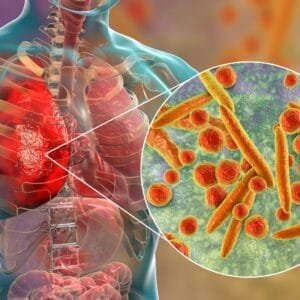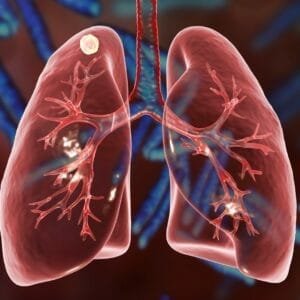Pneumonia: Causes, Symptoms, and Treatment
Pneumonia is a respiratory infection that inflames the air sacs in one or both lungs, causing them to fill with fluid or pus. This condition can range from mild to severe and can be life-threatening, especially for infants, older adults, and individuals with weakened immune systems. Pneumonia is commonly caused by bacteria, viruses, or fungi, making it a major global health concern.



What is Pneumonia?
Pneumonia occurs when infectious agents invade the lungs, leading to inflammation and impaired oxygen exchange. It may affect one lung (unilateral pneumonia) or both lungs (bilateral pneumonia). The infection can occur in various forms:
- Community-Acquired Pneumonia (CAP): Contracted outside healthcare settings.
- Hospital-Acquired Pneumonia (HAP): Developed during a hospital stay.
- Aspiration Pneumonia: Caused by inhaling food, liquid, or vomit into the lungs.
- Viral Pneumonia: Often caused by viruses like influenza or respiratory syncytial virus (RSV).
Causes of Pneumonia
Pneumonia is caused by a variety of microorganisms, including:
- Bacteria: The most common bacterial cause is Streptococcus pneumoniae. Other bacteria include Haemophilus influenzae and Legionella pneumophila.
- Viruses: Viruses like influenza, RSV, and SARS-CoV-2 (COVID-19) are leading causes of viral pneumonia.
- Fungi: Fungal pneumonia is rare but can occur in immunocompromised individuals. Examples include Histoplasma and Pneumocystis jirovecii.
- Other Factors: Aspiration of foreign material or exposure to chemical irritants.
Symptoms of Pneumonia
The symptoms of pneumonia can vary depending on the cause and severity. Common signs include:
- Cough: Produces mucus or phlegm, which may be yellow, green, or even blood-streaked.
- Fever and Chills: Often accompanied by sweating.
- Shortness of Breath: Difficulty breathing, especially during physical activity.
- Chest Pain: A sharp or stabbing sensation that worsens with deep breaths or coughing.
- Fatigue: Feeling excessively tired or weak.
- Confusion: Common in older adults or those with severe infections.
- Nausea or Vomiting: Particularly in children or individuals with severe illness.
Note: In severe cases, symptoms may include bluish lips or nails, indicating low oxygen levels.
Risk Factors for Pneumonia
Certain individuals are more susceptible to developing pneumonia, including:
- Age: Infants under 2 years old and adults over 65.
- Chronic Conditions: Asthma, COPD, diabetes, or cardiovascular disease increase risk.
- Weakened Immune Systems: Due to HIV/AIDS, chemotherapy, or organ transplants.
- Smoking: Damages lung tissue, making it more vulnerable to infections.
- Hospitalization: Prolonged hospital stays, particularly in intensive care, increase risk of HAP.
Complications of Pneumonia
If left untreated, pneumonia can lead to severe complications such as:
- Pleural Effusion: Fluid accumulation in the space between the lungs and chest wall.
- Lung Abscess: Pockets of pus in the lungs.
- Sepsis: A life-threatening infection that spreads throughout the body.
- Respiratory Failure: Inability of the lungs to supply enough oxygen.
Diagnosis of Pneumonia
To diagnose pneumonia, doctors typically use a combination of clinical evaluation and diagnostic tests:
- Physical Examination: Listening for abnormal lung sounds using a stethoscope.
- Chest X-Ray: Confirms the presence of inflammation or fluid in the lungs.
- Blood Tests: Identify infection and check oxygen levels.
- Sputum Culture: Determines the specific microorganism causing the infection.
- CT Scan: Provides detailed imaging in severe or unclear cases.
- Pulse Oximetry: Measures blood oxygen levels.
Treatment Options for Pneumonia
Treatment for pneumonia depends on its cause and severity:
Medications
- Antibiotics: For bacterial pneumonia (amoxicillin, azithromycin).
- Antiviral Drugs: For viral pneumonia (oseltamivir for influenza).
- Antifungal Drugs: For fungal pneumonia (fluconazole, amphotericin B).
- Fever Reducers and Pain Relievers: Such as ibuprofen or acetaminophen to manage symptoms.
Hospitalization
Severe cases may require hospital care, including:
- Intravenous (IV) antibiotics.
- Oxygen therapy to maintain oxygen levels.
- Mechanical ventilation in critical cases.
Preventing Pneumonia
You can lower your risk of pneumonia with these preventive measures:
- Vaccinations: Protect against pneumococcal disease, influenza, and COVID-19.
- Practice Good Hygiene: Wash hands regularly to avoid infections.
- Quit Smoking: Reduces lung damage and lowers susceptibility to respiratory infections.
- Strengthen Your Immune System: Eat a healthy diet, exercise, and get adequate sleep.
- Avoid Sick Individuals: Minimize exposure to people with respiratory infections.
FAQs about Pneumonia
1. What are the main causes of pneumonia?
Pneumonia is caused by bacteria, viruses, fungi, or aspiration of foreign substances.
2. How do you know if you have pneumonia?
Symptoms include cough, fever, chest pain, shortness of breath, and fatigue. A chest X-ray confirms diagnosis.
3. Can pneumonia be cured?
Yes, with appropriate treatment such as antibiotics, antivirals, or antifungals, most pneumonia cases can be cured.
4. Who is most at risk for pneumonia?
Infants, older adults, smokers, and individuals with chronic conditions or weakened immune systems are at higher risk.
5. How can I prevent pneumonia?
Vaccinations, good hygiene, avoiding smoking, and maintaining overall health can help prevent pneumonia.
Conclusion
Pneumonia is a common but potentially serious respiratory condition that requires prompt diagnosis and treatment. While it can affect anyone, understanding its causes, symptoms, and preventive measures can help reduce the risk. By staying vaccinated and adopting healthy habits, individuals can protect themselves and their loved ones from this respiratory illness.
